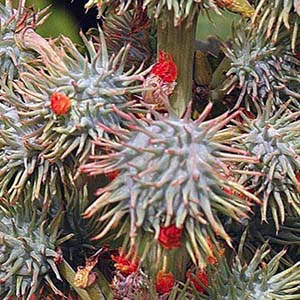An index of environmental and cultural suitability for the cultivation of climate-resilient castor bean in rainfed low-productivity common lands in Mexico

Accepted: 2 November 2022
HTML: 124
All claims expressed in this article are solely those of the authors and do not necessarily represent those of their affiliated organizations, or those of the publisher, the editors and the reviewers. Any product that may be evaluated in this article or claim that may be made by its manufacturer is not guaranteed or endorsed by the publisher.
Castor bean plants yield commercially important oilseeds with multiple uses; they are characterised by tolerance to drought and adaptation to marginal soils in arid and semi-arid regions. In northern Mexico, a large amount of arid land is categorised as ejidos: a system of mixed land ownership managed under a specific legal system, where land users have access to common or individual (parcelled) land. This work aimed to examine the suitability of castor bean cultivation on unused marginal land in ejido land. To determine the environmental suitability of the ejido lands of Coahuila, Mexico, we adapted a land productivity index (PI) from an existing method; it consisted of a set of biophysical indicators (edaphic factors, climate, and topography) adapted to castor bean cultivation. We then complemented this index with a cultural component, assessing the ethnobotanical knowledge of the people, their willingness to implement a new crop type, and the type and current use of the land. As a result, we found that 114,300 ha of ejido land (1.76% of the total) were very suitable for castor bean cultivation according to the environmental-PI and that 808,524 ha of ejido land (12.4% of the total) was very suitable according to the cultural-PI. We also hypothesised that the willingness of ejidatarios to cultivate castor beans was related to their degree of knowledge about the plant and the land available for its cultivation; however, their willingness was mostly related to differences in land tenure: ejidatarios who own parcelled land were more interested in obtaining benefits from the land through the implementation of novel crops, compared to those who only have access to common land.
How to Cite

This work is licensed under a Creative Commons Attribution-NonCommercial 4.0 International License.
PAGEPress has chosen to apply the Creative Commons Attribution NonCommercial 4.0 International License (CC BY-NC 4.0) to all manuscripts to be published.

 https://doi.org/10.4081/ija.2023.2107
https://doi.org/10.4081/ija.2023.2107







